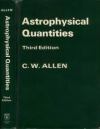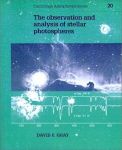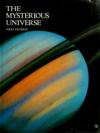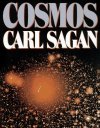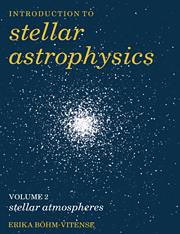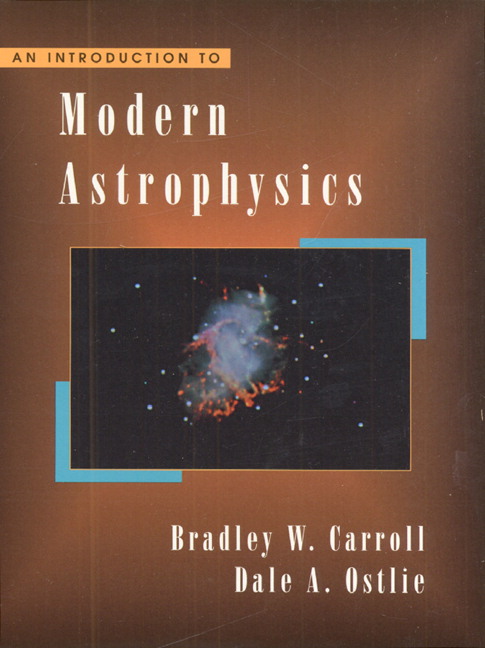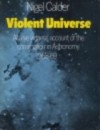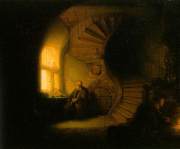Gravitational wave radiation exactly explains the observed spindown rate of 0.25 milliseconds per year for this white dwarf binary discovered in 2011. The work comes from the McDonald Observatory (University of Texas at Austin) group led by Don Winget and relies on a 200 hour dataset from the 75 year old 2.1 metre Otto Struve telescope (pictured). The binary period is 12.75 minutes.
Dark nebula Barnard 150
Posted in astronomy on August 28, 2012 by Tim KendallBiography of late nineteenth century astronomer E.E. Barnard, who catalogued numerous dark nebulae and visually discovered the inner moon of Jupiter, Amalthea. This was the last such discovery of a solar system object, in 1892. For an idea of how difficult an observation this must have been, check out this CCD imaging website.
Historical supernova remnants
Posted in astronomy on August 27, 2012 by Tim KendallThis is Cassiopeia A, from Chandra, HST and Spitzer. It may have been observed by John Flamsteed in 1680.
The supernova of 1572 is often called “Tycho’s supernova”, because of the extensive work De nova et nullius aevi memoria prius visa stella (“Concerning the Star, new and never before seen in the life or memory of anyone,” published in 1573, 1602, and 1610) that contains both Tycho Brahe’s own observations and the analysis of many other observers.
More Tycho history from the Galileo project
Williamette meteorite
Posted in astronomy on August 26, 2012 by Tim KendallThis is what a space rock should look like, except it’s actually iron and nickel. Other meteorites get left where they are found, like my personal favourite, the Mbozi meteorite in Tanzania.
Neptune’s large moon Triton
Posted in astronomy on August 25, 2012 by Tim KendallComposite from Voyager 2 1989 flyby.
Martian sunrise
Posted in astronomy on August 24, 2012 by Tim Kendall2005 image from the Spirit rover.
The Antennae NGC 4038 and 4039
Posted in astronomy on August 23, 2012 by Tim KendallComposite made using the Hubble Legacy Archive.
Longstanding enigma epsilon Aurigae solved
Posted in astronomy on August 21, 2012 by Tim KendallNow definitely explained as a post-asymptotic giant branch star of spectral type F orbited by a B-type main sequence object, complete with thick torus of gravel-sized grains.
A brief history of observations of the long period eclipsing variable.
Beryllium mirror segments for JWST
Posted in astronomy on August 20, 2012 by Tim KendallCollection of white papers detailing the science cases for the James Webb Space Telescope, from STScI.
Open cluster M7
Posted in astronomy on August 17, 2012 by Tim KendallCat’s Paw nebula
Posted in astronomy on August 16, 2012 by Tim KendallNGC 6334 in Scorpius, courtesy ESO/Robert Gendler
Kuiper belt collision
Posted in astronomy on August 15, 2012 by Tim Kendall
Illustration of how the Pluto/Charon system formed ©Donald Davis space art.
Sirius B from HST and Chandra
Posted in astronomy on August 13, 2012 by Tim KendallThe Sirius system. Left panel: The white dwarf Sirius B is barely visible in this optical image from HST. The main sequence star A is much brighter because while A is larger than the Sun, B is only about as big as Earth. Right panel: the view changes with A being only seen by leakage of its far-UV radiation on to the detector, while B is extremely bright, hot enough to emit low energy X-rays.
Colliding galaxies in Canis Major
Posted in astronomy on August 13, 2012 by Tim KendallNeutron star collision
Posted in astronomy on August 9, 2012 by Tim KendallAfter a minute or so of introduction this is a supercomputer simulation of how two merging neutron stars can produce enough energy to explain a gamma-ray burst. It is also a demonstration of how the chaotic magnetic field immediately starts to re-arrange itself in a bipolar form.
T. J. J. See and the ‘dark bodies’ in double stars
Posted in astronomy on August 8, 2012 by Tim Kendall
The name of T.J.J. See is not well known nowadays but he was in his time an offbeat controversialist. He worked in the heyday of accurate astrometric measurements of double stars using large refractors like the 24 inch Alvan Clark (pictured), and may have made the first claim to have observed an extrasolar planetary body.
Our observations [of double star systems] during 1896-97 have certainly disclosed stars more difficult than any which astronomers had seen before. Among these obscure objects about half a dozen are truly wonderful, in that they seem to be dark, almost black in color, and apparently are shining by a dull reflected light. It is unlikely that they will prove to be self-luminous. If they should turn out [to be] dark bodies in fact, shining only by the reflected light of the stars around which they revolve, we should have the first case of planets – dark bodies – noticed among the fixed stars.
With regard to another binary star 70 Ophiuchi See announced
There is some dark body or other cause disturbing the regularity of its elliptical motion, but heretofore all efforts to see it with the telescope have been unsuccessful.
Quoted in The Biological Universe: The Twentieth Century Extraterrestrial Life Debate and the Limits of Science
by Steven J. Dick (1999) from original 1897 article by See in Atlantic Monthly.
The claim predates the better known one made by Peter van de Kamp for Barnard’s star detailed here which turned out also to be spurious. But that was not at all such a wild claim – a result of systematic errors and technology not yet up to the exacting astrometry necessary.
The Dick book is not one I’ve seen before and points out that the astrometric methods needed to detect planets were already demonstrated by Bessel in 1844, when measurements with a few arcsecond precision indirectly revealed the white dwarf companions of Procyon and Sirius. Sirius B was first seen by Clark in 1862.
Mars
Posted in astronomy on August 5, 2012 by Tim KendallWhile awaiting news from Mars tomorrow morning I thought to highlight The Mars Society. Robert Zubrin has originated new ideas for manned Mars exploration in his Case for Mars.
For an older treatment of the subject one can do no better than to immerse oneself in Kim Stanley Robinson’s Mars trilogy.
1999 HST image.
Brown dwarf binary CFBDSIR 1458+10
Posted in astronomy on August 1, 2012 by Tim KendallBrown dwarf binary CFBDSIR1458+10 imaged by Keck II.
The secondary component has between 6 and 15 Jupiter masses.
Evil twins in Robot Astronomy Talk Show
Posted in Uncategorized on August 1, 2012 by Tim KendallThere are loads of these. This one explains brown dwarfs.
NGC 7331 from Spitzer
Posted in astronomy on August 1, 2012 by Tim KendallPublic outreach from the Image Processing and Analysis Centre at Caltech.
This image came from the Infrared Legacy gallery
Habitable Planets Catalogue
Posted in astronomy on July 31, 2012 by Tim KendallThe Habitable Exoplanets Catalog – Planetary Habitability Laboratory @ UPR Arecibo.
Gliese 581g straight back in at number one. Link goes directly to the University of Puerto Rico at Arecibo habitable exoplanets catalog.
Update 2 Aug 2012 on the Gliese 581 system from Centauri Dreams – the existence of Gliese 581g and indeed the nature of the whole system is still controversial.
Oph 1622 revisited: still a binary brown dwarf
Posted in astronomy on July 30, 2012 by Tim KendallThis fascinating object more likely has ~ 17 and 14 Jupiter masses for the two components respectively.
See also Luhman et al. paper referenced by the above authors.
Pleiad Merope
Posted in astronomy on July 30, 2012 by Tim KendallThe star Merope in the Pleiades. It is now known that the nebulosity seen around the Pleiades stars is not associated with them – the cluster is just moving through. However with an age of ~ 120 Myr the Pleiades has proved a useful hunting ground for brown dwarfs.
Cygnus X-1 by NuSTAR
Posted in astronomy on July 27, 2012 by Tim KendallSpeaking of Cyg X-1 this is the first-light image from NuSTAR compared to previous best. I’m think I’m right in saying this is the first focused image made in X-rays at this energy.
Iapetus
Posted in astronomy on July 26, 2012 by Tim Kendall
Long known to have one hemisphere darker than the other – as we can now see for sure something very black and sooty impacted the otherwise icy moon in the past. Cassini image from 2007.
Update: The above statement is not true. I have learned that it is dark material spiralling in from the outer moon, Phoebe.
No “face” on Mars
Posted in astronomy on July 25, 2012 by Tim KendallFrom HiRISE. It’s a pareidolia
Blue supergiant with unseen companion
Posted in astronomy on July 23, 2012 by Tim KendallAn artist’s impression of the Cygnus X-1 system






























